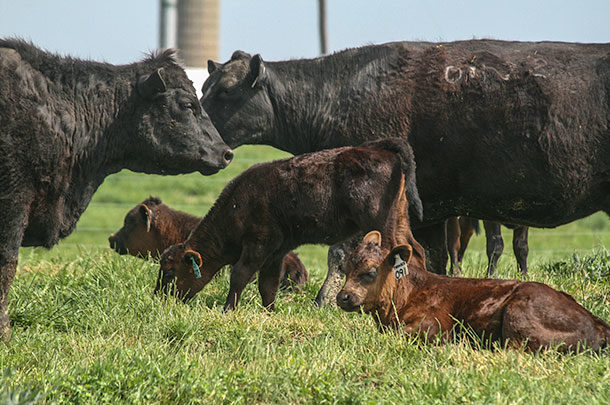For several years, producers have used this practice of dragging pastures as a way to increase forage production and soil fertility. But with the increased input costs and the value of time and labor, it typically pencils out as one of those practices that works agronomically, but not always economically.
“Dragging pasture is one of those ‘it depends’ practices,” explains Jessica Williamson, a forage crop specialist at Pennsylvania State University. “It all just depends on your operation, production goals, stocking rates, cost of fuel and the amount of time it takes you away from your other spring ‘to-dos.’ If you have a continuous grazing system, I would venture to say that dragging is going to fit your operation better than in some rotational or more intensively managed grazing systems. In a managed grazing system, the nutrients from manure will already be distributed more evenly than in a continuous system.”
The actual research on the effectiveness and the economics behind dragging pastures is limited to say the least. If you are looking at implementing this practice, or if you are contemplating whether or not you should remove it from your management, Williamson strongly encourages you to look at the benefits and determine if they are worth the cost on your operation.
Benefit 1: Distribution of nutrients
Unlike cutting fields for hay, Austin Sexten, a master grazer coordinator at the University of Kentucky, points out that when animals graze, more than 80 percent of the plant nutrients are returned to the soil through the deposition of manure and urine. Because manure is such an important fertilizer source, dragging pastures can help evenly disperse those nutrients throughout the pasture.
In addition, Sexten says dragging pastures also helps reduce selective grazing by minimizing the areas that are left ungrazed due to livestock avoiding grazing near manure piles. When this occurs, you will notice a lot of patchiness in terms of regrowth, and this practice can help minimize that, he says.
Benefit 2: Parasite control
Dragging pastures can also be a tool to help control parasites and pests, Williamson says. Because parasites (mostly flies) target fresh manure piles for laying their eggs, dragging or harrowing your pastures can open up the manure piles, killing the eggs from exposure to the sun. This is one of the most beneficial aspects of dragging your pasture, she says.
Benefit 3: Winter feeding in a concentrated area
Williamson also points out that some producers roll out their hay while feeding their cows in the winter. If this is a management practice on your operation, she suggests dragging through the leftover hay piles to help distribute the manure as well as the leftover, stemmy roughage that was not consumed.
Benefit 4: Distribution of seed
If there was seed in any hay fed during the winter and you would like to assist in reseeding an area, dragging will help distribute the seed, Sexten says. By spreading the seed out and getting more seed-to-soil contact, it will help increase your chance of germination.
In general, both Sexten and Williamson recommend that the earlier you drag, the better. It can be done as soon as the manure patties are no longer frozen, and it will give the seeds the chance to germinate and the nutrients to be used by the plants during the early green-up period.
When looking at the pitfalls of dragging pastures, Williamson says the biggest reason why you wouldn’t want to drag is primarily economics-based and the time that it takes to do it. However, it also depends on whether or not you have access to a good drag.
“Some heavy drags will actually tear up the grass roots, doing more harm than good,” she says. “But you also have to look at how much it takes out of your day. You have to ask yourself, ‘Do I have the time to spend dragging pastures or would my time be more useful doing something else?’”
So if you’re looking for one of the above benefits and you have determined you have time to spare, dragging fields could be a viable option for your operation. However, if it doesn’t pencil out, it may be one of those spring practices you can knock of your “to-do” list. FG
PHOTO: Staff photo.













